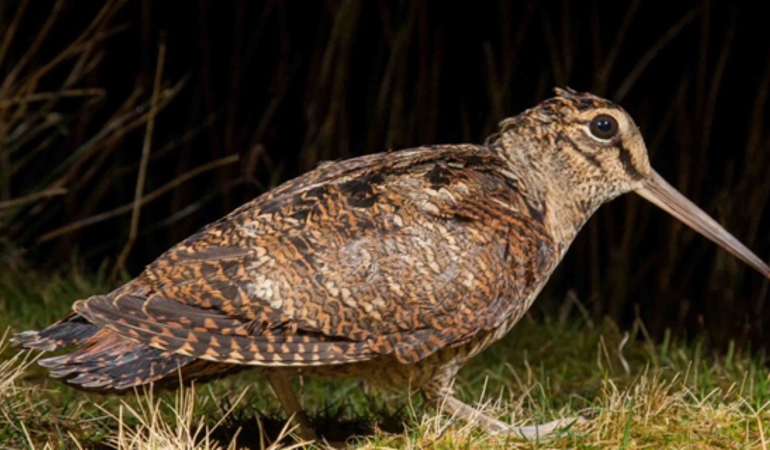Study into birds at Newborough enters tenth year

Christopher Bridge, working with the British Trust for Ornithology, is studying a large population of woodcock at Newborough National Nature Reserve and Forest, Anglesey
In this blog he writes about the study which has been running for 10 years with more than 300 woodcock ‘ringed’ around Newborough.
The woodcock, or Scolopax rusticola, is a much-understudied species on the British Breeding Bird List.
A highly secretive, natured bird, predominantly nocturnal, it is very scarcely seen. Knowledge of the bird mainly comes from hunters and gamekeepers, as it is very widely shot.
The significant tool of research to study this species is bird ringing, a research method which involves a licensed bird ringer fitting a small metal ring on the bird’s leg. Each bird ring has its own unique number which enables the birds to be monitored and studied efficiently.
Due to the elusive nature of the woodcock, compared to many other species, very few are actually ringed each year in the United Kingdom. A link between the British Trust for Ornithology (BTO), The Woodcock Network and The Game and Wildlife Conservation Trust are the main sources behind the ringing and studying of woodcock.
Newborough National Nature Reserve and Forest is managed by Natural Resources Wales (NRW). This specialist knowledge and management of the open dune slacks, native woodlands and scrublands, as well as the mixed woodland mosaics, is absolutely crucial for the wintering population of woodcock in the area.
These habitats are vital as they provide a safe roosting site and an abundant food source for foraging woodcock as they ‘flight’ out of the forest at dusk, from the mixed coniferous and deciduous woodlands to feed at night.
The combination of these habitats creates a haven for a significantly large population of overwintering woodcock.
I am working with NRW and the BTO which all links into the ever so present international agenda for our migratory woodcock and creates a huge array of biodiversity gain for the area.
The ongoing management and restoration work for the open dune systems is also crucial as the areas of wet slacks provide a vital foraging habitat for the species.
Anglesey doesn’t have the highest proportion of woodland in the world, but it does hold some rather important areas of woodland, in particular at Newborough.
The thick, damp and wet ground floor and the mixture of smaller shrubs and trees, replicates the woodcock’s breeding grounds over in Scandinavia.
Woodcock will sit up in the forest all day, keeping out of harm ways and at dusk, they ‘flight’ out onto the warren to feed at night. On most visits this was clearly evident when seeing birds feeding at the side of the main roads within the forest and observing them flying out over the woodland and in the direction of the warren.
The continued grazing of livestock, sheep, cattle and horses provides an extra source of habitat management and also an added food source. The livestock help keep the length and sward height of the grass and the habitat to the recommended levels.
On an end note, Newborough Forest and Newborough Warren, as one, is such as hugely important site for woodcock and I would like to think that we will strive to work together and conserve this very important population of birds and the ecosystem throughout the future years of the project.
Image: Hamza Yassin
